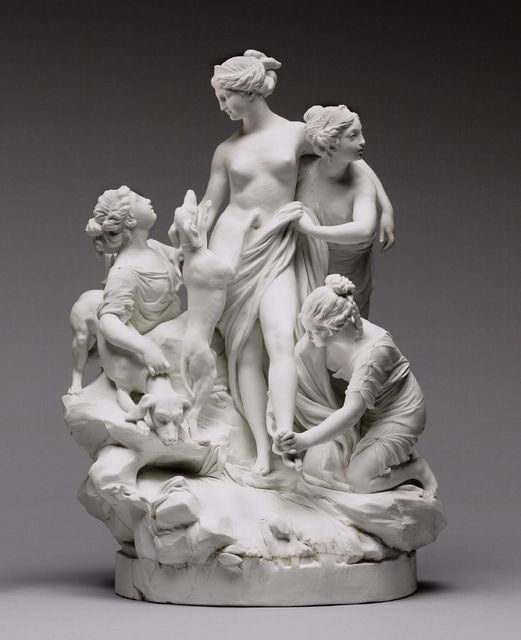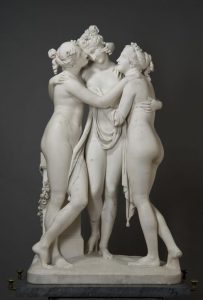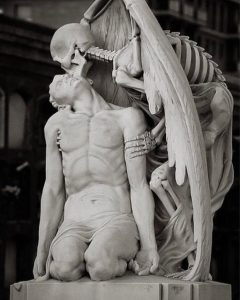Crafted in the late 18th century, the ‘Figure of Diana Being Bathed by Her Attendants’ is a remarkable example of the artistic excellence achieved by the Sèvres Porcelain Factory in France. This exquisite sculpture, possibly originally modeled by the renowned French sculptor Louis-Simon Boizot, stands as a testament to the elaborate craftsmanship and aesthetic sensibilities of its time.
Historical Context and Artistic Merit
Dating back to circa 1790, this porcelain figure group embodies the refined grace and sophisticated elegance characteristic of the Neoclassical period in French art. Louis-Simon Boizot, a prominent sculptor of the era and the head of the sculpture studio at Sèvres from 1773 to 1809, is often credited with the original model. His work was pivotal in defining the Sèvres factory’s output, which was known for its innovative techniques and exquisite decorative art pieces that graced the palaces and grand houses of Europe.
Description of the Sculpture
The sculpture depicts Diana, the Roman goddess of the hunt, moon, and nature, in a moment of serene intimacy, being bathed by her attendants. Diana is shown standing, her dignity intact, yet rendered with a softness that evokes the tactile quality of her surroundings and interactions. Her attendants, detailed with delicate precision, engage in the act of bathing the goddess, each figure expressing a gentle attentiveness. The piece is marked by fluid lines and dynamic movement, capturing a frozen moment with a living essence.

Technical and Artistic Innovations
The Sèvres Porcelain Factory, renowned for its pioneering work in ceramic materials and techniques, utilized soft-paste porcelain for this sculpture, allowing for finer, more intricate modeling and a pristine, glass-like surface finish. The choice of material highlights the factory’s commitment to innovation, which allowed for greater expression and detail that were difficult to achieve with traditional hard-paste porcelain.
Symbolism and Interpretation
The choice of Diana as the subject reflects the Neoclassical revival of interest in classical mythology and its ideals of beauty and purity. The depiction of the goddess in a moment of vulnerability, yet surrounded by loyalty and care, resonates with the period’s fascination with themes of nature, divinity, and the human form. It suggests a reverence for classical stories as moral and aesthetic exemplars.
Contemporary Relevance
Today, the ‘Figure of Diana Being Bathed by Her Attendants’ continues to be celebrated not only as a masterpiece of porcelain art but also as a cultural artifact that offers insight into the social and artistic values of the late 18th century. It holds a place of pride in museum collections and continues to fascinate scholars, art lovers, and casual observers alike with its timeless beauty and historical significance.
As we appreciate this remarkable work, it serves as a reminder of the enduring legacy of Sèvres porcelain and its role in the development of Western decorative arts. It invites viewers to explore the rich tapestry of history, art, and mythology, all captured through the transformative medium of porcelain.








